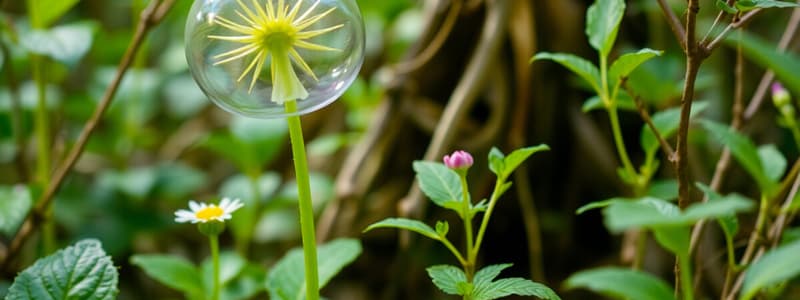Podcast
Questions and Answers
Which of the following is NOT a factor that needs to be regulated for homeostasis?
Which of the following is NOT a factor that needs to be regulated for homeostasis?
- Internal temperature
- Water levels
- Muscle strength (correct)
- Blood glucose concentration
Homeostasis involves regulating factors that ensure reactions involving enzymes occur at optimal rates.
Homeostasis involves regulating factors that ensure reactions involving enzymes occur at optimal rates.
True (A)
What is homeostasis?
What is homeostasis?
The ability of an organism to regulate its internal conditions.
An organism regulates its internal conditions such as blood glucose concentration, internal temperature, and ______ levels.
An organism regulates its internal conditions such as blood glucose concentration, internal temperature, and ______ levels.
Match the following regulatory factors with their importance:
Match the following regulatory factors with their importance:
What is the primary function of the leaf in a plant?
What is the primary function of the leaf in a plant?
The xylem transports nutrients bidirectionally throughout the plant.
The xylem transports nutrients bidirectionally throughout the plant.
What is the primary role of the phloem in plants?
What is the primary role of the phloem in plants?
Water enters the plant through the roots by ______ and mineral ions by ______.
Water enters the plant through the roots by ______ and mineral ions by ______.
What is the main function of the xylem in a plant?
What is the main function of the xylem in a plant?
What is the role of the root system in a plant?
What is the role of the root system in a plant?
In plants, the process of __________ refers to the upward movement of water through the xylem.
In plants, the process of __________ refers to the upward movement of water through the xylem.
Match the plant parts with their primary functions:
Match the plant parts with their primary functions:
Flashcards
Homeostasis
Homeostasis
A process that allows living things to maintain a stable internal environment - like staying at a comfortable temperature.
Blood glucose regulation
Blood glucose regulation
The concentration of glucose in the blood needs to be regulated for cells to get the energy they need.
Internal temperature regulation
Internal temperature regulation
The body's internal temperature needs to stay within a narrow range for enzymes to function properly.
Water level regulation
Water level regulation
Signup and view all the flashcards
Why is homeostasis important?
Why is homeostasis important?
Signup and view all the flashcards
What is transpiration?
What is transpiration?
Signup and view all the flashcards
What is xylem?
What is xylem?
Signup and view all the flashcards
What is phloem?
What is phloem?
Signup and view all the flashcards
What is translocation?
What is translocation?
Signup and view all the flashcards
What is a meristem?
What is a meristem?
Signup and view all the flashcards
Study Notes
Homeostasis
- An organism's ability to regulate/control its internal conditions so crucial reactions (including those involving enzymes) can happen at optimal rates.
What needs to be regulated:
- Blood glucose concentration
- Internal temperature
- Water levels
Studying That Suits You
Use AI to generate personalized quizzes and flashcards to suit your learning preferences.




